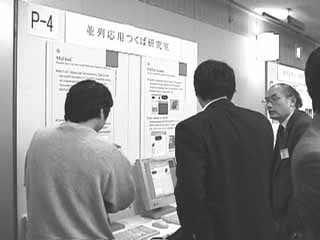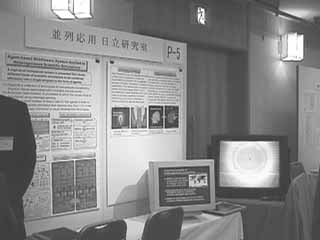Parallel Application TRC Laboratory
http://pdap1.trc.rwcp.or.jp/research/research.html

We have successfully ported those parallel application programs onto a new compact 8-node Linux PC cluster which we will demonstrate at the digital poster session of the RWC 2000 symposium.
The PAPIA (PArallel Protein Information Analysis) system is an integrated parallel computing system dedicated to typical search/ analysis problems required in protein research, such as structure similarity search, sequence homology search, and multiple sequence alignment. The system was first implemented on a 64-node PC cluster (PAPIA cluster) and we have been operating a WWW-based free service since April 1998. This service has been accessed from 63 countries in the world to date. Now the PAPIA system also runs on a compact and inexpensive 8-node cluster (PAPIA mini cluster).
We also present our work on chemical applications with our parallel molecular dynamics simulation. We have developed an original parallel molecular dynamics simulation program called MolTreC which employs a parallel Barnes-Hut tree code for calculating long-range Coulomb interactions. The MolTreC program can rapidly calculate the Coulomb interactions of proteins in water without any cutoff approximations. The PC clusters show good scalability in these two real applications.
Heterogeneous Scientific Simulations
Parallel Application Hitachi Laboratory
http://www.rwcp.or.jp/activities/acheivements/PA/hitachi/hp1new.html
